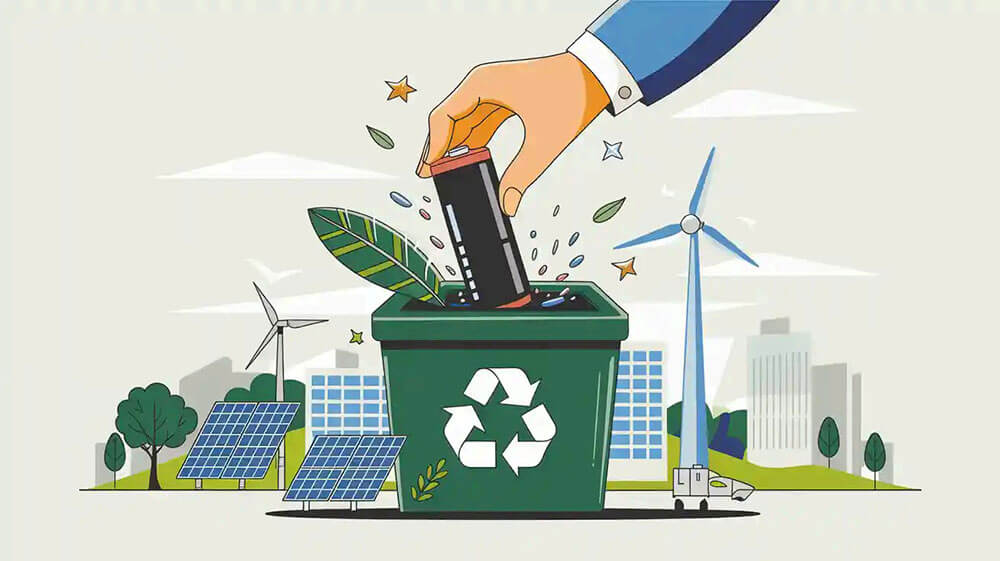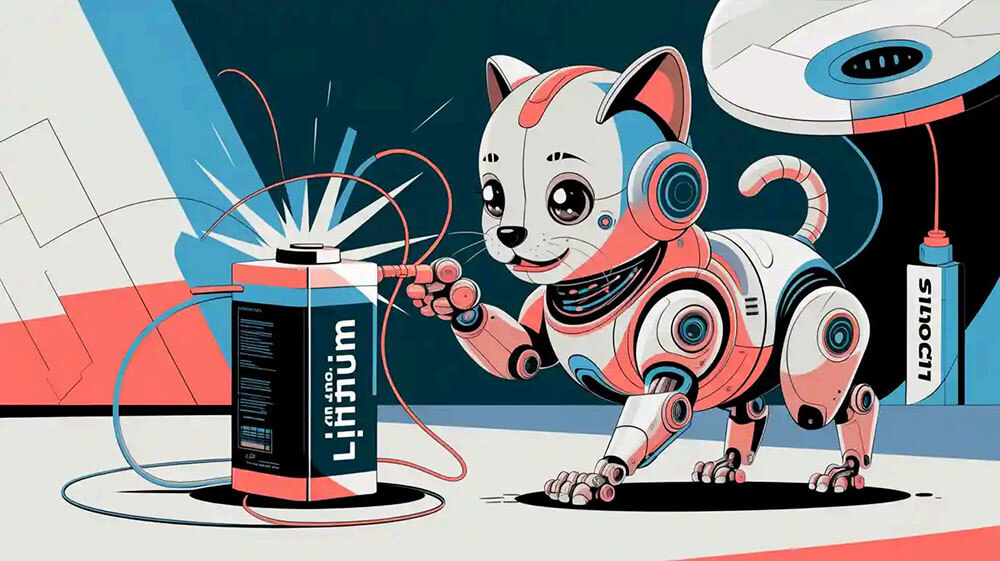Contents
A 3.7V lithium-ion cell typically offers a lifespan of 2 to 3 years or 300 to 1,000 charge cycles. Manufacturers estimate that most cells retain about 80% of their capacity after 500 to 1,000 cycles under ideal conditions. However, factors like charging habits and storage conditions can significantly impact battery life. For instance, overcharging or exposing the battery to extreme temperatures may reduce its lifespan. To maximize the life of your 3.7V battery, you should maintain charge levels between 20% and 80% and store it at around 50% charge when not in use.
Key Takeaways
- A 3.7V lithium-ion battery lasts about 2–3 years or 300–1,000 charge and discharge cycles.
- To make it last longer, keep the charge between 20% and 80%.
- Avoid charging it too much and store it in a cool, dry spot.
- Keep the battery at 50% charge when storing to prevent damage.
- Using the battery too much can make it wear out faster.
- Let the battery rest sometimes to avoid putting too much strain on it.
- Check for problems like shorter use time or slower charging.
- Replace the battery if it stops working well.
Part 1: Lifespan of a 3.7V Lithium-Ion Cell
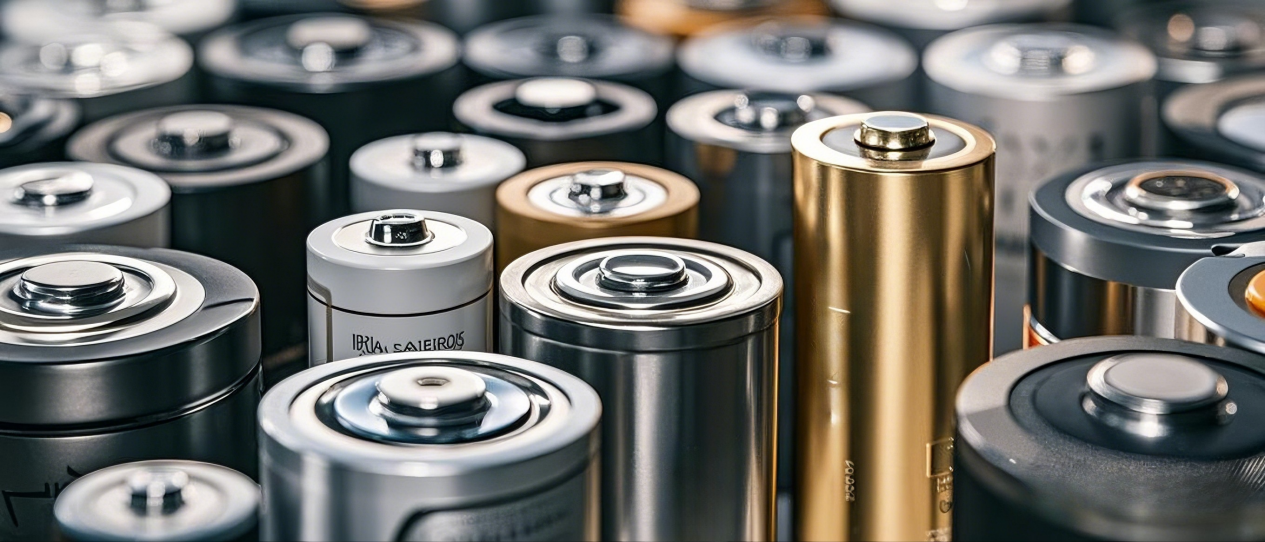
Average Lifespan in Years and Cycles
A 3.7V lithium-ion cell typically lasts between 2 to 3 years or completes around 300 to 1,000 charge and discharge cycles before its battery capacity drops significantly. These figures represent averages reported in technical studies and apply under normal usage conditions. However, the actual lifespan can vary depending on factors like charging habits, environmental conditions, and the quality of the battery.
- Average lifespan: 2 to 3 years
- Charging cycles: Approximately 300 to 500
If you use your battery in high-drain applications or expose it to extreme temperatures, its lifespan may shorten. On the other hand, proper care and maintenance can help you get closer to the upper end of this range.
What Is a Charge Cycle?
A charge cycle refers to one complete discharge and recharge of a lithium-ion battery. For example, if you use 50% of your battery’s capacity one day and recharge it, then use another 50% the next day, that counts as one full cycle. The depth of discharge (DoD) plays a critical role in determining the number of cycles your battery can handle.
- A 100% DoD represents a full cycle.
- A 10% DoD is considered a partial cycle.
- Cycling within a mid-state-of-charge range (e.g., 20% to 80%) helps extend battery life.
By minimizing deep discharges and avoiding overcharging, you can maximize the number of charging cycles your 3.7V battery can endure.
How Long Can a Lithium-Ion Battery Last Under Optimal Conditions
Under ideal conditions, a lithium-ion battery can last longer than its average lifespan. Research shows that keeping the depth of discharge below 80% and storing the battery at moderate temperatures (15–25°C or 59–77°F) can significantly extend its life. The table below highlights key factors that influence battery longevity:
| Factor | Evidence |
|---|---|
| Cycle Life | 300–1,000 cycles before capacity drops to 80% |
| Depth of Discharge | Keeping DoD below 80% extends lifespan |
| Temperature | Ideal storage at 15–25°C (59–77°F) |
By following these guidelines, you can ensure your 3.7V lithium-ion cell performs optimally for as long as possible.
Part 2: Factors Influencing the Longevity of a 3.7V Battery
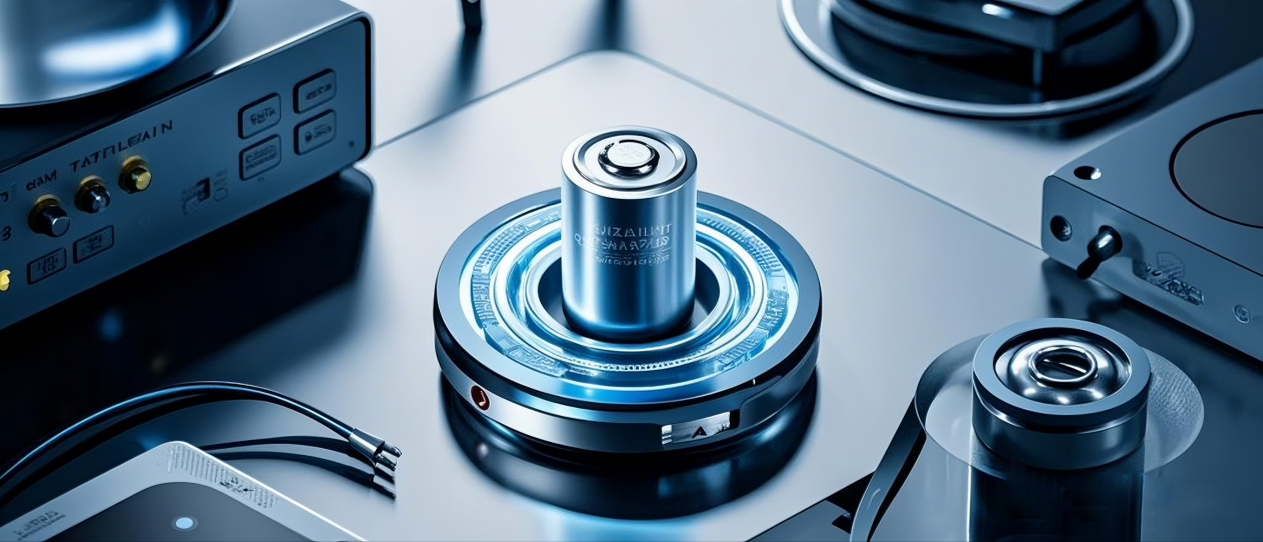
Usage Patterns and High-Drain Applications
Your usage patterns play a critical role in determining battery longevity. High-drain applications, such as powering devices with intense energy demands, can significantly reduce the effective lifespan of a 3.7V lithium-ion battery. Frequent use of high-current devices stresses the battery, leading to faster degradation. For instance, tasks like gaming or running heavy software on portable devices can accelerate wear and tear.
- High-drain devices increase stress on the battery, reducing the number of charge cycles.
- Regular use of power-intensive tasks can shorten battery life.
- Deeper discharges, where the battery is drained to near 0%, exert more strain on its components.
To preserve battery longevity, avoid using your battery for prolonged high-drain tasks. Instead, balance usage with periods of rest to minimize stress on the battery.
Charging Habits and Voltage Levels
Your charging habits directly impact battery performance and longevity. Overcharging or charging above 4.20V per cell can shorten the battery’s life. Research shows that maintaining a charge level between 20% and 80% reduces stress on the battery cells and extends its lifespan. Additionally, a slight reduction in voltage, such as charging to 4.10V instead of 4.20V, can double the cycle life, though it may slightly reduce capacity.
- Proper charging practices reduce wear on lithium-ion batteries.
- Keeping charge levels between 20% and 80% is recommended.
- Avoiding complete discharges and overcharging prevents unnecessary stress.
By adopting these habits, you can maximize battery longevity while maintaining optimal battery performance.
Storage Conditions and Temperature Effects
Storage conditions significantly influence battery longevity. Storing your 3.7V lithium-ion battery in cool, dry environments is essential. High temperatures can trigger harmful chemical reactions, while freezing conditions may damage internal components. Experts recommend storing batteries at approximately 50% charge to minimize stress.
| Factor | Description |
|---|---|
| Temperature | Cool, dry storage prevents chemical damage. |
| Charge Level | Storing at 50% charge reduces stress on battery components. |
Avoid exposing your battery to extreme temperatures or leaving it fully charged or discharged for extended periods. These practices will help maintain battery longevity and ensure reliable performance over time.
Battery Quality and Manufacturing Standards
The quality of a 3.7V lithium-ion battery depends heavily on its manufacturing standards. High-quality batteries undergo rigorous testing and adhere to strict industry benchmarks. These measures ensure that the battery delivers consistent performance and achieves maximum longevity. When evaluating a battery’s quality, you should consider the following key factors:
- Specifications and Data Sheets: Manufacturers provide detailed information about the battery’s rated and nominal capacities, charge and discharge voltages, and maximum current limits. These specifications help you understand the battery’s capabilities and ensure compatibility with your devices.
- Testing Metrics: Reliable batteries undergo extensive testing to verify their performance and safety. This includes capacity and energy density testing, which measures how much energy the battery can store. Cycle life testing evaluates how many charge cycles the battery can handle before its capacity drops significantly. Thermal testing ensures the battery operates safely under various temperature conditions. Safety testing and internal resistance testing further confirm the battery’s reliability and efficiency.
Batteries that meet these standards are more likely to offer a longer lifespan and better performance. Poor-quality batteries, on the other hand, may degrade quickly or fail prematurely. By choosing batteries from reputable manufacturers, you can ensure that your lithium-ion battery meets the highest quality standards.
When purchasing a 3.7V lithium-ion battery, always review the manufacturer’s data sheets and testing certifications. These documents provide valuable insights into the battery’s design and expected longevity. A well-manufactured battery not only enhances battery life but also reduces the risk of safety issues, such as overheating or leakage.
Part 3: Tips to Extend the Life of Your Rechargeable Lithium-Ion Battery
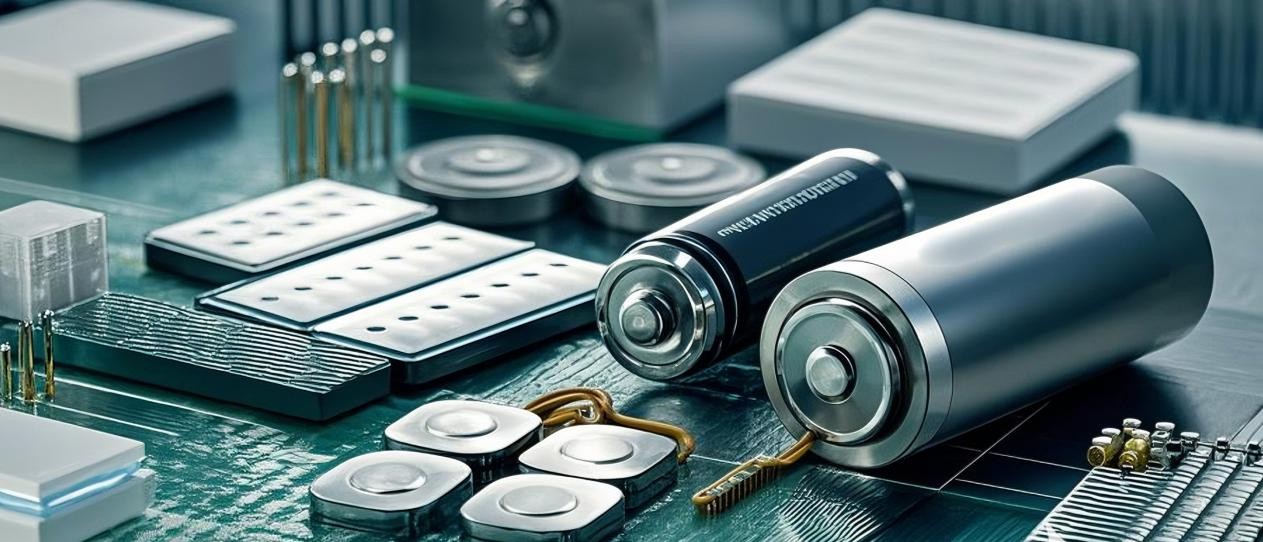
Best Practices for Charging and Discharging
Proper charging and discharging habits are essential for maximizing the life of your rechargeable lithium-ion battery. Avoid overcharging by unplugging the device once it reaches 80% charge. Overcharging can generate excess heat, which accelerates battery wear. Similarly, avoid letting the battery drain completely. Recharge when the charge level drops to around 20%. Frequent short charges are better than full discharges, as they reduce stress on the battery cells.
Using the original charger or a certified third-party charger ensures compatibility and prevents damage. Chargers that do not meet specifications may overheat the battery or cause inconsistent charging. Maintaining a charge level between 20% and 80% minimizes stress on the battery and extends its lifespan.
Tip: Avoid leaving your device plugged in overnight. This practice can expose the battery to prolonged heat, reducing its efficiency over time.
Proper Storage Techniques for a 3.7V Lithium-Ion Cell
Storing your rechargeable lithium-ion battery correctly is crucial for preserving its performance. Keep the battery at a moderate charge level, ideally around 50%, when not in use for extended periods. This reduces stress on the battery components and prevents deep discharge. Store the battery in a cool, dry place, away from direct sunlight or high humidity. Extreme temperatures can degrade the battery’s capacity and lead to permanent damage.
- Maintain storage temperatures between -20°C to 25°C (-4°F to 77°F).
- Use insulation or climate control if storing in extreme conditions.
- Periodically check the battery’s charge level and recharge to 50% if necessary.
Unplugging the battery from devices during storage prevents slow discharge, which can lead to capacity loss over time. Following these steps ensures your battery remains in optimal condition.
Avoiding Extreme Temperatures and Environmental Stress
Extreme temperatures significantly impact the performance and longevity of lithium-ion batteries. High temperatures accelerate chemical reactions inside the battery, causing faster degradation. Cold environments can also damage internal components, reducing overall efficiency. To protect your battery, keep it within an operating temperature range of 20°C to 25°C (68°F to 77°F).
Note: Avoid leaving your device in direct sunlight or near heat sources, such as radiators or car dashboards, as this can cause overheating.
Environmental stress, such as exposure to moisture or dust, can also harm the battery. Use protective cases or enclosures to shield the battery from these elements. By maintaining ideal conditions, you can ensure your rechargeable lithium-ion battery delivers reliable performance throughout its life.
Using Compatible Chargers and Accessories
Using compatible chargers and accessories is essential for maintaining the health and longevity of your lithium-ion battery. Chargers designed specifically for your battery type ensure safe and efficient charging. Incompatible chargers, on the other hand, can lead to overcharging, overheating, or even permanent damage to the battery. These issues not only reduce battery life but may also pose safety risks.
When selecting a charger, always prioritize compatibility. Manufacturers design chargers to match the voltage and current requirements of specific batteries. Using a charger with incorrect specifications can stress the battery, causing it to degrade faster. Accessories, such as charging cables, should also meet the required standards to avoid inconsistent power delivery.
The table below highlights best practices for charging and their explanations:
| Best Practice | Explanation |
|---|---|
| Use Compatible Chargers | Always charge batteries using devices specifically designed for your battery type. Incompatible chargers can cause overcharging, overheating, or permanent damage. |
| Avoid Deep Discharges | Prevent the battery from draining completely, as deep discharges shorten battery life. Recharge around 20% capacity whenever possible. |
Tip: Always check the specifications of your charger and accessories before use. This simple step can significantly extend the life of your lithium-ion battery.
By following these guidelines, you can ensure your battery operates efficiently and safely. Proper charging practices not only enhance battery performance but also help you get the most out of its lifespan.
Part 4: Recognizing When to Replace Your 3.7V Lithium-Ion Cell
Signs of Battery Degradation
Knowing when to replace your 3.7V lithium-ion battery is essential for maintaining device performance and safety. Over time, all lithium-ion batteries experience wear and tear, which manifests in several noticeable ways:
- Capacity fade: The battery stores less energy, leading to shorter device operation times.
- Increased internal resistance: Charging and discharging take longer, and the battery generates more heat during use.
- Voltage drop: A lower operational voltage reduces the efficiency of power delivery.
- Cycle count: Performance declines as the number of charge-discharge cycles increases.
- State of Health (SOH): This metric measures the battery’s condition compared to its original capacity and helps predict its remaining life.
You may also notice practical signs, such as your device running for less than 80% of its original runtime or taking significantly longer to charge. Some devices provide alerts when the battery needs replacement. If these signs appear, it’s time to consider replacing the battery.
| Criteria | Description |
|---|---|
| Run Time | Drops below 80% of the original run time. |
| Charge Time | Increases significantly. |
Replacing a degraded battery ensures your device continues to perform reliably and safely.
Environmental Considerations for Disposal
Proper disposal of used lithium-ion batteries is crucial for environmental safety. These batteries contain materials that can harm the environment if not handled correctly. Never throw them in household garbage or regular recycling bins. Instead, take them to designated recycling or hazardous waste collection points.
To prevent accidents during disposal, follow these precautions:
- Place each battery in a separate plastic bag.
- Tape the terminals to avoid short circuits or fires.
| Evidence Type | Description |
|---|---|
| Disposal Method | Lithium-ion batteries should not be placed in household garbage or recycling bins; they must be taken to recycling or hazardous waste collection points. |
| Safety Precautions | Each battery should be placed in a separate plastic bag, and terminals should be taped to prevent fires. |
| Hazardous Waste Classification | Most lithium-ion batteries are considered hazardous waste under RCRA, being ignitable and reactive. |
By disposing of your battery responsibly, you help protect the environment and comply with hazardous waste regulations.
A 3.7V lithium-ion cell typically lasts 2 to 3 years or around 300 to 1,000 charge cycles. However, proper care can significantly extend its lifespan. Everyday practices like avoiding extreme temperatures, preventing overcharging, and maintaining optimal charging habits play a critical role in preserving battery life. For instance, keeping charge levels between 20% and 80% and storing your 3.7V battery in a cool, dry place can help maximize its performance.
Tip: Regularly monitor your 3.7V battery’s condition to recognize signs of degradation and replace it when necessary. This ensures your devices continue to operate efficiently and safely.
By following these best practices, you can enhance the lifespan of your 3.7V lithium-ion cell and enjoy reliable performance for years.
FAQs
What is the typical lifespan of a 3.7V lithium-ion battery?
A 3.7V lithium-ion battery typically lasts 2 to 3 years or 300 to 1,000 charge cycles. Proper care, such as avoiding overcharging and extreme temperatures, can help extend its life.
Can I use my device while charging the battery?
Yes, you can use your device while charging. However, this practice may generate heat, which can reduce battery life over time. To minimize stress, avoid running high-drain applications during charging.
How do I know if my lithium-ion battery needs replacement?
Signs include reduced runtime, slower charging, and overheating. If your battery holds less than 80% of its original capacity or your device frequently shuts down unexpectedly, consider replacing it.
Is it safe to leave a lithium-ion battery charging overnight?
Leaving a lithium-ion battery charging overnight is not recommended. Prolonged charging can generate heat and stress the battery, reducing its lifespan. Unplug the charger once the battery reaches 80% for optimal performance.
What is the best way to store a lithium-ion battery?
Store your battery at around 50% charge in a cool, dry place. Avoid extreme temperatures and direct sunlight. Periodically check the charge level and recharge if it drops significantly to maintain battery health.


